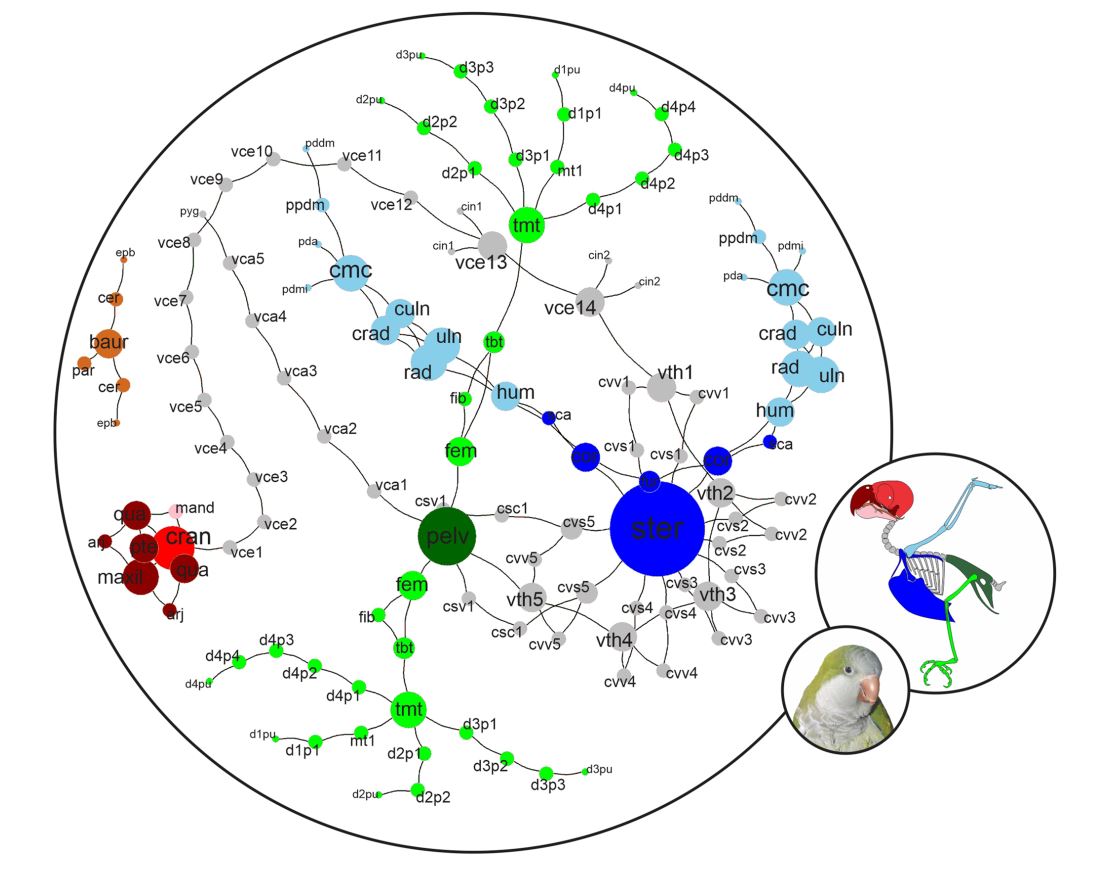Investigation
The Network Ontogeny of the Parrot: Altriciality, Dynamic Skeletal Assemblages, and the Avian Body Plan
Julieta Carril, Claudia P. Tambussi, Diego Rasskin‑Gutman
We analyze the connectivity patterns and fusion events among bones leading to the adult skeletal organization during the development of the superaltricial monk parakeet (Myiopsitta monachus, Psittaciformes), providing insights about the functional and evolutionary significance in the avian structural design. By using whole mount specimens stained for cartilage and bone, we apply anatomical network analysis (AnNA) to study the ontogenetic trajectory of the entire skeleton from embryonic stage 34 to adult. As bones condense, connect, and fuse to each other, we follow skeletal assemblages forming networks that change dynamically as the monk parakeet grows. Our results show that the pelvic girdle connects with the vertebral column prior to the pectoral girdle and that the pelvic girdle and hindlimbs connection begins and ends before that of the pectoral girdle and the forelimbs. We hypothesize that connections of the girdles and limbs could be linked to the altriciality of the species due to requirements for active movement in the use of the hindlimbs inside the nest, but not the need to use forelimbs to fly until much later. Further, as bones of the skull and pelvis fuse during development they form the largest and more connected assemblages, acting as attractors to connect to other bones, showing congruence between the connectivity pattern at each ontogenetic stage and the characteristic avian body plan.
The Network Ontogeny of the Parrot: Altriciality, Dynamic Skeletal Assemblages, and the Avian Body Plan
